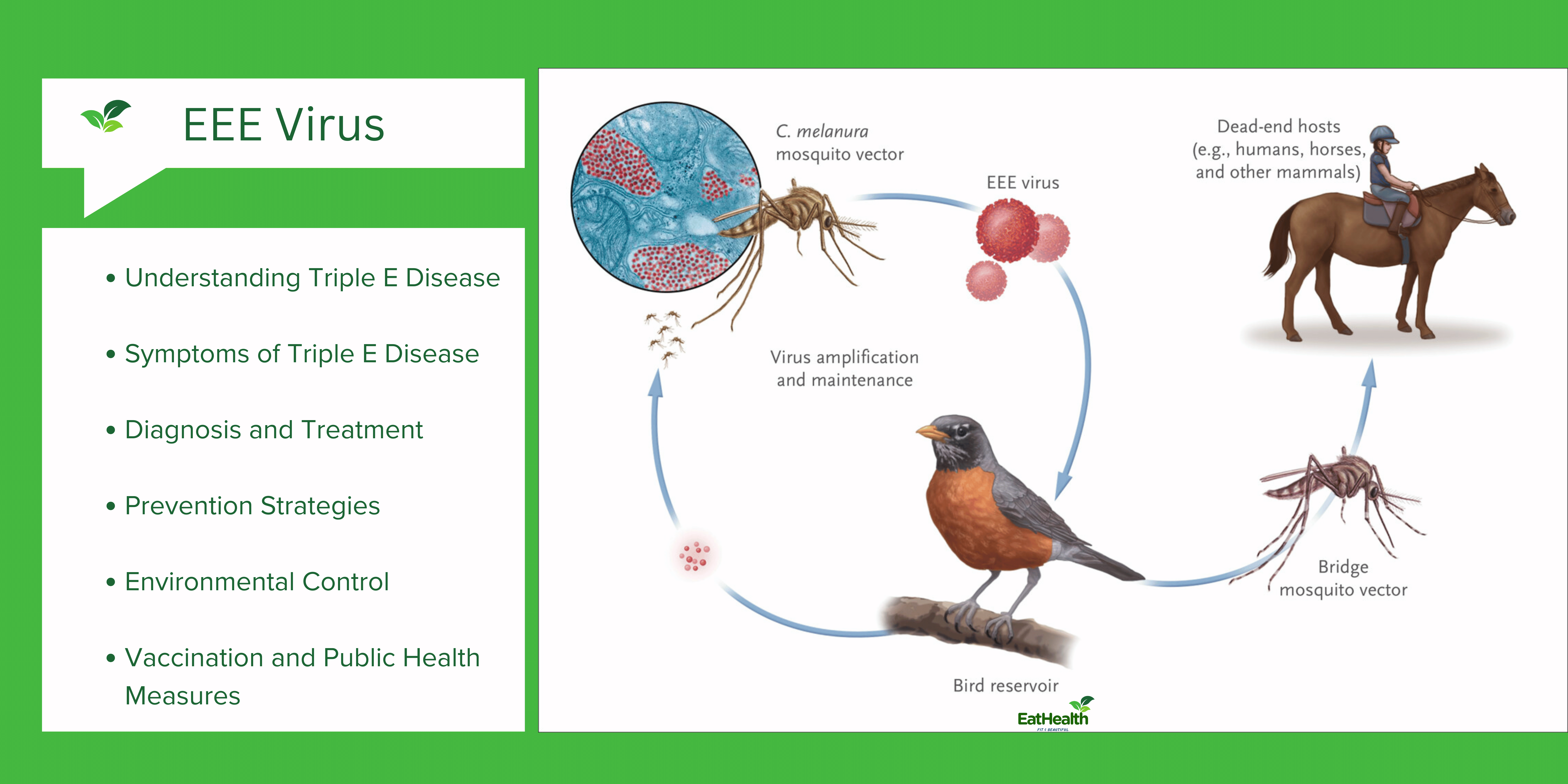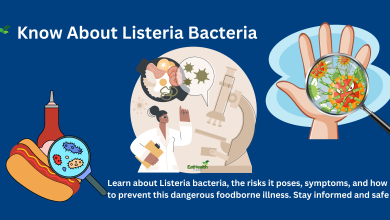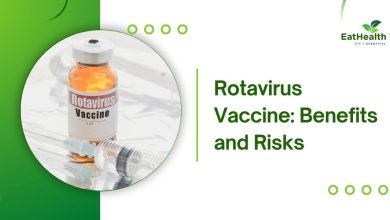Beware of Triple E Disease
The Silent Killer: How to Protect Yourself and Loved Ones from Triple E Disease
Beware of Triple E Disease: Understanding, Preventing, and Managing Eastern Equine Encephalitis

Introduction
Eastern Equine Encephalitis (EEE), commonly known as Triple E Disease, is a rare but serious viral infection transmitted by mosquitoes. It poses a significant public health risk, particularly in areas with high mosquito activity. The disease primarily affects horses, hence the name “equine,” but it can also be deadly for humans. Understanding the nature of Triple E Disease, its symptoms, prevention, and treatment is crucial for both personal and community health.
This article provides an in-depth analysis of Triple E Disease, making it accessible to readers from high school students to healthcare professionals. We’ll explore how the virus spreads, its impact on health, and the steps individuals and communities can take to mitigate the risks.
Understanding Triple E Disease
What is Triple E Disease?
Triple E Disease is caused by the Eastern Equine Encephalitis virus (EEEV), a member of the Alphavirus genus. The virus is primarily found in the eastern United States but has been reported in other regions, including Canada, the Caribbean, and Central and South America. The disease is rare, with only a few reported cases each year, but it has a high fatality rate among those who contract it.
Transmission of the Virus
The EEEV is transmitted to humans and horses through the bite of an infected mosquito. Mosquitoes become carriers of the virus after feeding on infected birds, which serve as the primary reservoir hosts. Not all mosquitoes carry the virus; specific species, such as Culiseta melanura, are more likely to be involved in the transmission cycle.
Once a mosquito is infected, it can transmit the virus to humans and other mammals, particularly horses. While the virus does not typically spread from person to person, or from animals to humans, the presence of the virus in a community indicates a heightened risk of infection.
Symptoms of Triple E Disease
The symptoms of Triple E Disease can range from mild to severe. In many cases, individuals infected with EEEV may remain asymptomatic, meaning they do not exhibit any symptoms. However, when symptoms do occur, they can be severe and life-threatening.
Early Symptoms: Initial symptoms often resemble those of the flu, including fever, headache, chills, and muscle pain. These symptoms typically appear 4 to 10 days after being bitten by an infected mosquito.
Severe Symptoms: In severe cases, the virus can cause encephalitis, an inflammation of the brain. This can lead to symptoms such as high fever, disorientation, seizures, and coma. The progression from mild symptoms to severe neurological involvement can be rapid and fatal.
Long-term Effects: Survivors of severe EEE may experience long-term neurological problems, including memory loss, personality changes, and physical impairments. The high mortality rate and potential for permanent disability make Triple E Disease one of the most dangerous mosquito-borne illnesses.
Diagnosis and Treatment
Diagnosing Triple E Disease can be challenging due to its rarity and the similarity of its early symptoms to those of other illnesses. Healthcare providers may use a combination of clinical assessment and laboratory tests to confirm the presence of EEEV.
Laboratory Tests: Blood tests and spinal fluid analysis are commonly used to detect antibodies or viral RNA associated with EEEV. In some cases, imaging tests such as MRI or CT scans may be conducted to identify brain inflammation.
Treatment: There is no specific antiviral treatment for Triple E Disease. Medical care focuses on managing symptoms and providing supportive care. Hospitalization is often required for severe cases, where patients may receive intravenous fluids, respiratory support, and medications to reduce brain swelling.
Given the lack of targeted treatment, prevention is critical in managing the risks associated with Triple E Disease.
Prevention Strategies
Personal Protection Against Mosquito Bites
Preventing mosquito bites is the first line of defense against Triple E Disease. Here are some effective strategies to protect yourself and your family:
Use of Insect Repellents: Apply insect repellents containing DEET, picaridin, or oil of lemon eucalyptus on exposed skin. These repellents are highly effective in deterring mosquitoes.
Wearing Protective Clothing: When outdoors, especially during peak mosquito activity times (dawn and dusk), wear long-sleeved shirts, long pants, and socks. Light-colored clothing is less attractive to mosquitoes.
Using Mosquito Nets: For added protection, use mosquito nets while sleeping, particularly in areas where mosquitoes are prevalent. like zika virus
Environmental Control
Reducing the population of mosquitoes in your environment can significantly lower the risk of Triple E Disease. Effective mosquito control involves both community-level interventions and individual actions.
Eliminate Standing Water: Mosquitoes breed in stagnant water. Regularly empty containers, gutters, birdbaths, and other potential breeding sites around your home.
Use of Mosquito Traps: Installing mosquito traps can help reduce the local mosquito population by capturing adult mosquitoes.
Community Mosquito Control Programs: Support local mosquito control programs that conduct spraying and other measures to control mosquito populations. These programs often target specific areas with high mosquito activity, reducing the overall risk of virus transmission.
Vaccination and Public Health Measures
Currently, there is no human vaccine for Triple E Disease, but a vaccine is available for horses. Public health efforts focus on raising awareness and encouraging preventive behaviors to reduce the incidence of the disease.
Horse Vaccination: Owners of horses should ensure that their animals are vaccinated against Triple E. The vaccine is effective in preventing the disease in horses, which can reduce the overall risk of EEEV transmission.
Public Health Campaigns: Public health authorities often issue warnings and guidelines during mosquito season to help communities prepare and protect themselves. These campaigns may include information on mosquito control, personal protection measures, and recognizing the symptoms of Triple E Disease.
Impact on Public Health
Epidemiology and Outbreaks
Though Triple E Disease is rare, it has a high mortality rate, particularly among those who develop encephalitis. Understanding the epidemiology of the disease helps in assessing the risk and implementing effective prevention strategies.
Geographical Distribution: Triple E Disease is most common in the eastern United States, with sporadic cases reported in other parts of the country. Certain regions, particularly those with extensive wetlands and bird populations, are at higher risk.
Seasonal Patterns: The risk of Triple E Disease increases during late summer and early fall, coinciding with peak mosquito activity. Public health authorities monitor mosquito populations and virus activity to predict and respond to potential outbreaks.
Case Studies and Historical Outbreaks
Several notable outbreaks of Triple E Disease have occurred over the years, providing valuable insights into the nature of the disease and the effectiveness of prevention efforts.
Outbreak in Massachusetts (2019): In 2019, Massachusetts experienced one of the worst outbreaks of Triple E Disease in decades. The outbreak resulted in 12 human cases, including 6 fatalities. The state responded with extensive mosquito control efforts, including aerial spraying, to reduce the risk of further transmission.
Ongoing Research: Ongoing research aims to better understand the virus, develop new treatment options, and improve prevention strategies. Studies focus on the ecology of the virus, the role of different mosquito species in its transmission, and potential vaccine development.
Long-Term Outlook and Future Considerations
Climate Change and Mosquito-Borne Diseases
Climate change is expected to have a significant impact on the distribution and activity of mosquito populations, potentially increasing the risk of Triple E Disease and other vector-borne illnesses.
Expanding Range of Mosquitoes: Warmer temperatures and changing precipitation patterns may expand the range of mosquitoes that can carry EEEV, leading to the spread of the disease into new areas.
Longer Mosquito Seasons: Extended mosquito seasons could increase the period during which people are at risk of contracting Triple E Disease.
The Role of Technology in Disease Prevention
Advancements in technology offer new tools and approaches for preventing and managing Triple E Disease.
Mosquito Monitoring: The use of drones and satellite imagery allows for more precise monitoring of mosquito populations and the environments in which they thrive.
Genetic Engineering: Research into genetically modifying mosquitoes to reduce their ability to transmit viruses is ongoing. Such technologies could play a critical role in controlling the spread of Triple E Disease and other mosquito-borne illnesses.
Public Health Preparedness
To effectively combat Triple E Disease, public health agencies must continue to invest in research, education, and prevention efforts.
Surveillance Programs: Robust surveillance programs are essential for early detection of EEEV activity and prompt response to potential outbreaks.
Community Engagement: Educating the public about the risks of Triple E Disease and the importance of preventive measures is key to reducing the incidence of the disease. Community involvement in mosquito control efforts can significantly enhance the effectiveness of these programs.
Conclusion
Triple E Disease, though rare, represents a serious public health threat due to its high fatality rate and potential for long-term neurological damage. Awareness, prevention, and early intervention are crucial in managing the risks associated with this mosquito-borne virus. By understanding how the virus spreads, recognizing the symptoms, and taking appropriate preventive measures, individuals and communities can protect themselves from this dangerous disease.
YouTube Channel for Health realted Educational Videos
Public health agencies, healthcare providers, and researchers must continue to work together to combat Triple E Disease, utilizing the latest technology and strategies to safeguard public health. As climate change and other factors potentially increase the risk of mosquito-borne diseases, a proactive approach will be essential in protecting communities from the threat of Triple E Disease and ensuring a healthier future for all.




